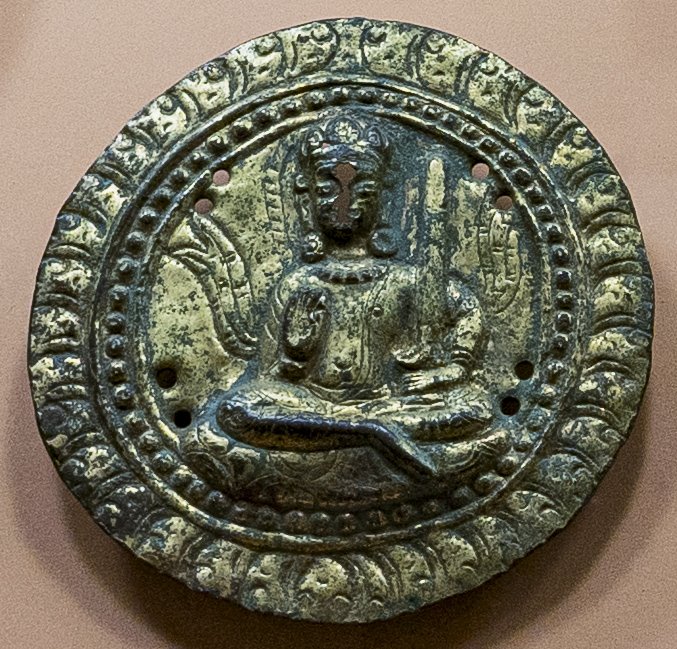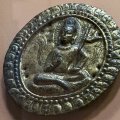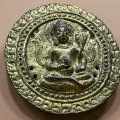Patan Museum (Nepal): photo 193
Photo 193 of 212 in Gallery: Patan Museum (Nepal)

Image title: a hoard of Gilded Objects (from Purandi)
Description of the photo
This plaques represent a Hoard of Gilded Objects, from the 11th century origination from Nepal.—Materials used: Repoussé, gilt.
These repoussé plaques were found in 1978 near the village of Purandi, a few kilometers west of Pharping, on the south-west rim of the Kathmandu Valley It is unknown whether the hoard was a thief’s trailside cache, or whether it was a genuine archaeological deposit.
The plaques—eleven in all—represent Hindu deities. The pierced holes indicate that they were probably nailed to the exterior of the temple as is done today. An inscription on the rectangular plaque at center, dated A.D. 1065, states that they were offered along with other images, now missing, to Shiva. The inscription is especially important since very few Nepalese images bear an inscribed date. Stylistically the images are similar to the nearby stone image of Surya, also dated by an inscription to 1065. Both the sculpture and the gilded plaques were almost certainly made by artisans dwelling in Patan not far from this museum.
The rectangular plaque at left represents Kumari/Karttikeya astride his peacock; while the rectangular plaques at center and right are composite images. The center image is half-Shiva, half-Parvati; while the right image is half-Shiva, half-Vishnu.
The large roundel at upper left depicts Chandra, the moon god. in his chariot drawn by seven geese. The other large roundel (upper right) depicts a goddess, possibly Lakshmi. Five of the small roundels represent Shiva’s followers, the Ganas, shown in the role of guardians. The small roundel (far right), which represents Shiva, is not part of the Purandi hoard, but it clearly originated in the same place.
Gallery information:
The Patan Museum is located on the Durbar square of Patan (Lalitpur/Lalitapura, Kathmandu, Nepal) which is associated Keshav Narayan Chowk (Keshavnarayan)—a form of Lord Vishnu. Being listed as a World Heritage Site, the whole of Durbar square is filled with exquisite temples, sculptures and other ancient structures, of which the ancient history history can be traced to the Malla Kings of Lalitpur. It is an important site for both Buddhism and Hinduism.
Photo details:
Date: 2019-12-02
Camera: SONY ILCE-6400
Exposure: 1/30
Aperture: f/5
ISO: 100
Focal length: 18mm
High resolution:
Download file
Size: 382.27 KB
Resolution: 677 x 649
© Photograph by Gabe Hiemstra.
License: CC BY-NC-ND 4.0

